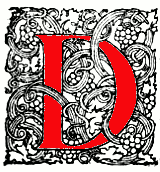Want to know how to navigate the Victorian Web? Click here.
The Wellesley Periodical Index identifies the author as Joseph Beavington Atkinson (1822-1886). — George P. Landow. .

ivers authorities foretell that in England, as in France, the arts will find new birth under socialism, communism, and other forms and forces of democratic rule.
But what are the reasons for the promised revival of art under such political and social revolution? Mr Ruskin surely, after many years, has little to show except brilliant eloquence and generous expenditure. And as for Mr William Morris, his success as art manuacturer indicates that his genius accommodates itself sufficiently well to “the stupidity of the present state of society.” Indeed, as a matter of fact, his paper-hangings, tapestries, and carpets meet the requirements not of democracies, but of aristocracies. And unfortunately his social and art theories are contradicted by historic experiences. The world's great epochs in art have been identified with crowned heads and glittering courts, with gilded palaces and noble and wealthy families. And as for the greatest artists of the best periods, they found their reward in the loving service of their art; and so far from reaping the abundant harvest of competitive profits, they died as they lived—in comparative poverty.
Mr Morris, in his honourable calling of art-industry, unconsciously re futes the communistic system which, he boasts, would abolish “poverty as well as riches, squalor as well as luxury.” We know from personal inspection of the Oxford Street shop that the goods on sale are suited only to a state of riches and luxury; we find, moreover, that the choicest designs are identified in the history of art with monarchies and oligarchies. In short, appeal is made to the aristocratic tastes of cultured and high-born English men. The style is out of keeping with republican simplicity and socialist equality. The price, too, might not be quite convenient to communistic pockets. For example, we remember a small rug for which was asked ten guineas; also another, larger in scale, ornate in design, and gorgeous in colour, which mounted up to the aristo cratic figure of 100 guineas Such luxurious products simply belie socialistic principles. This sumptuous art, indeed, will be wholly without a market when landed and cotton lords are relieved of their possessions, or when palaces are apportioned into lodgings to receive the honest artisan. [444]
Bibliography
Atkinson, Joseph Beavington. “The State of Art in France.” Blackwood’s Edinburgh Magazine. 135 (April 1884): 427-51. Hathi Trust Digital Library online version of a copy in the University of Iowa Library. Web. 1 September 2020.
Last modified 2 September 2020